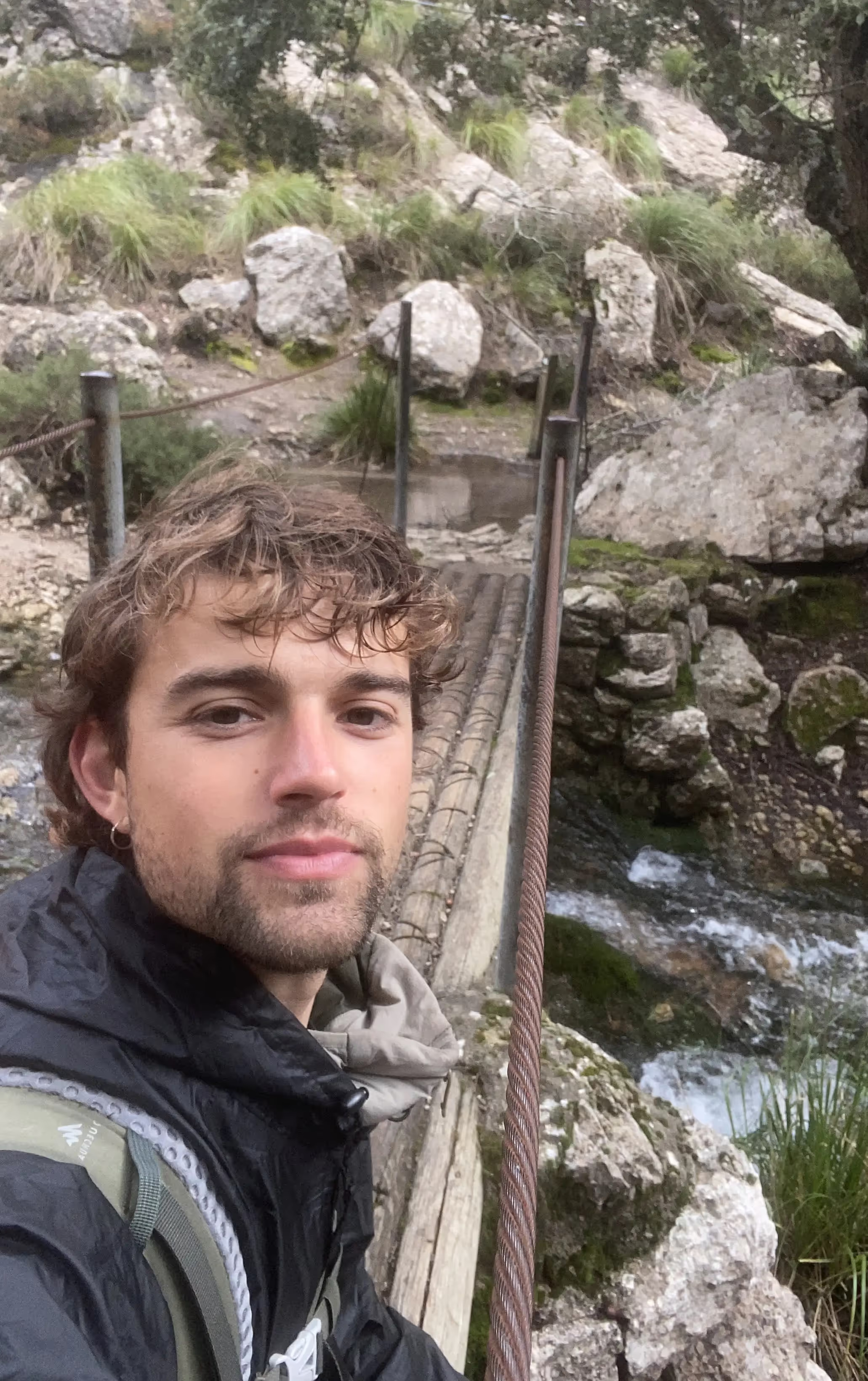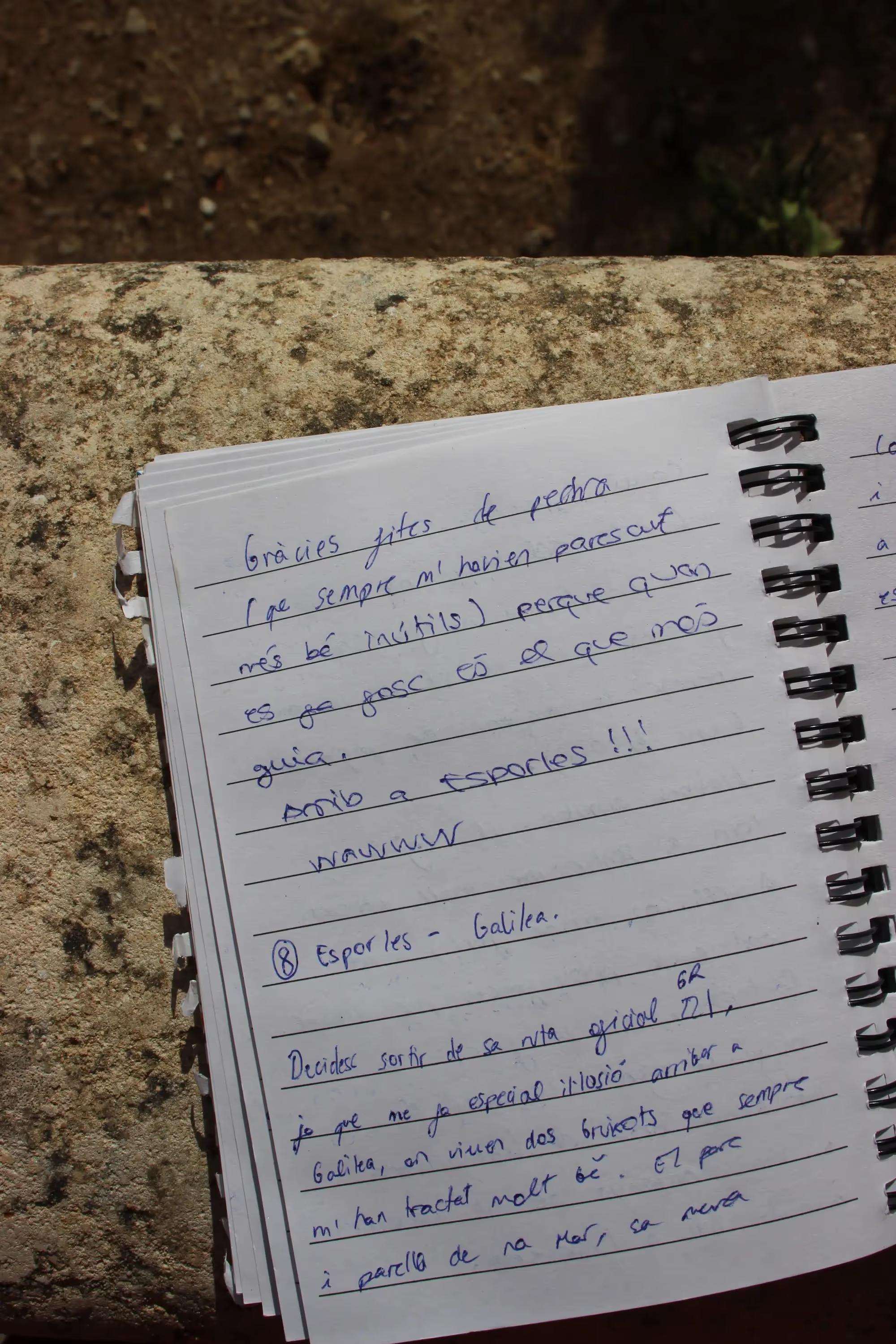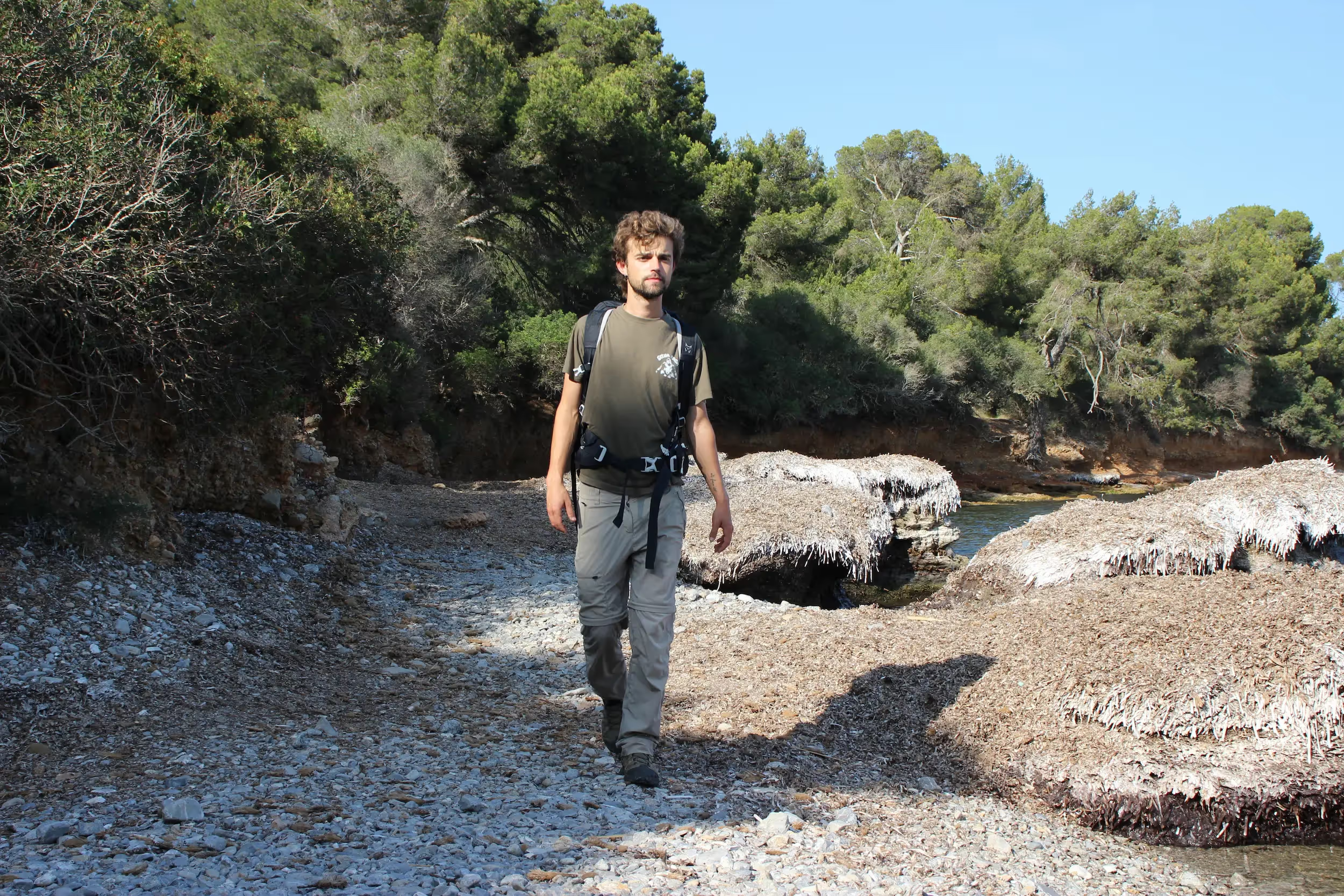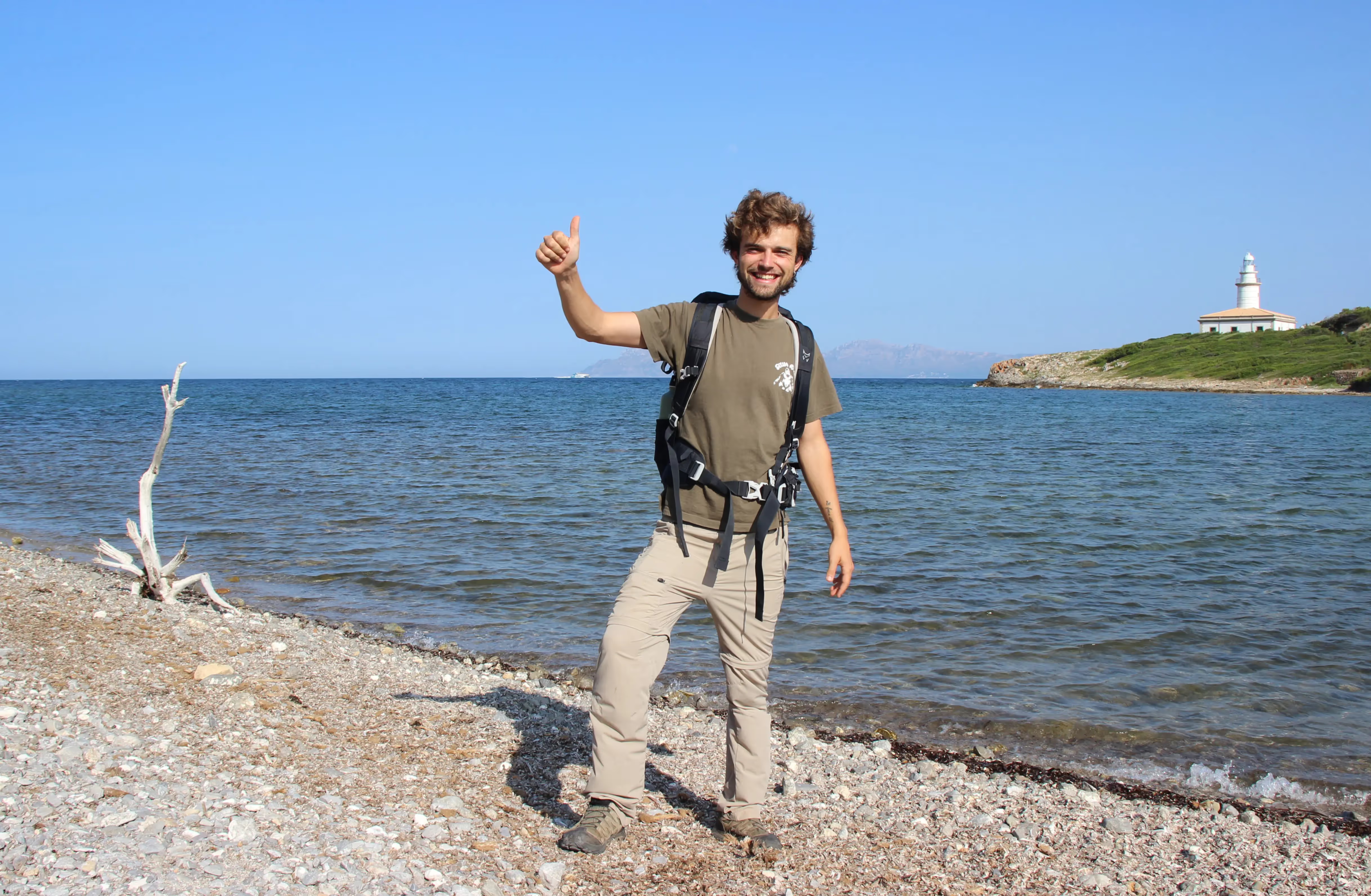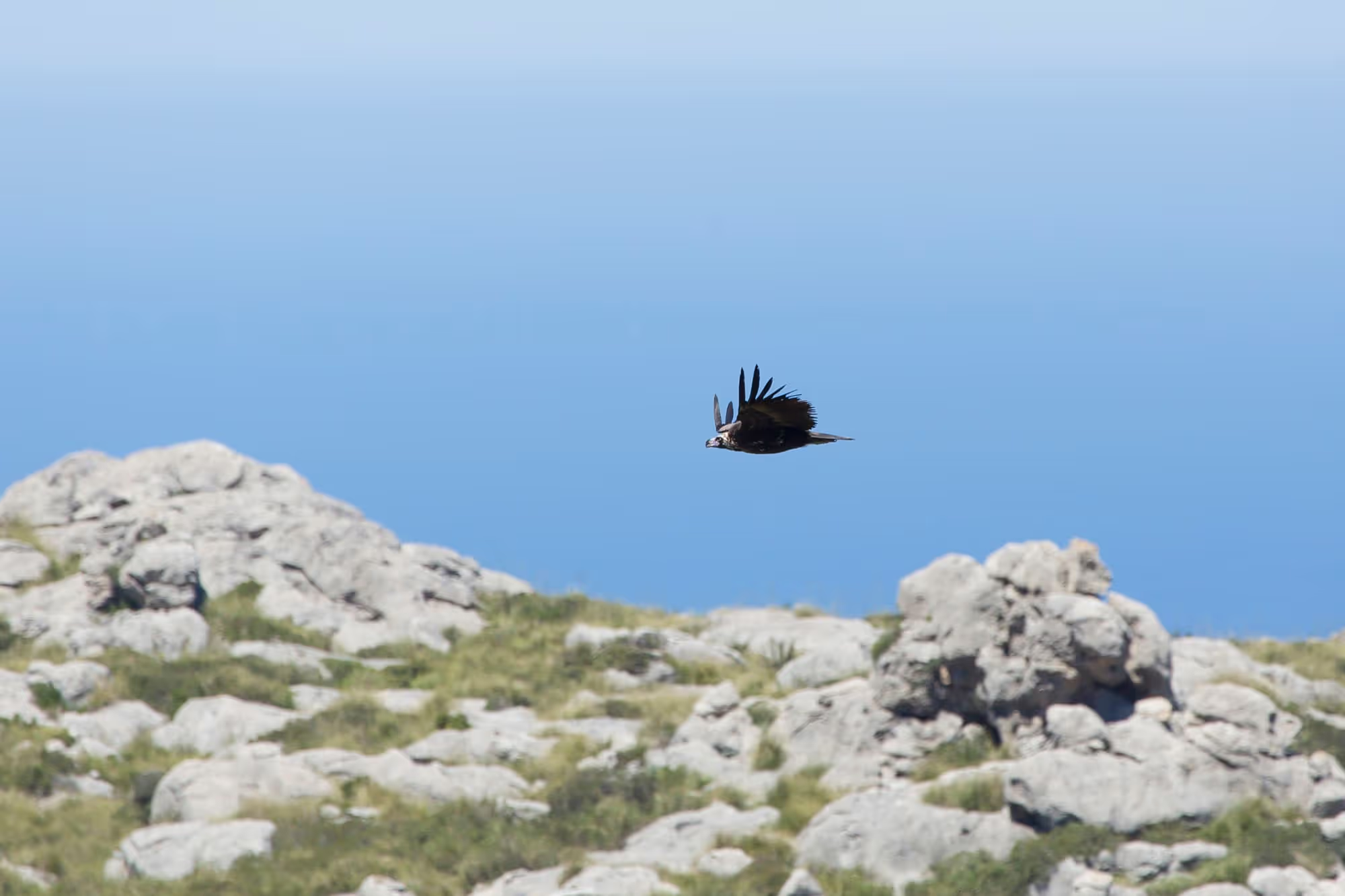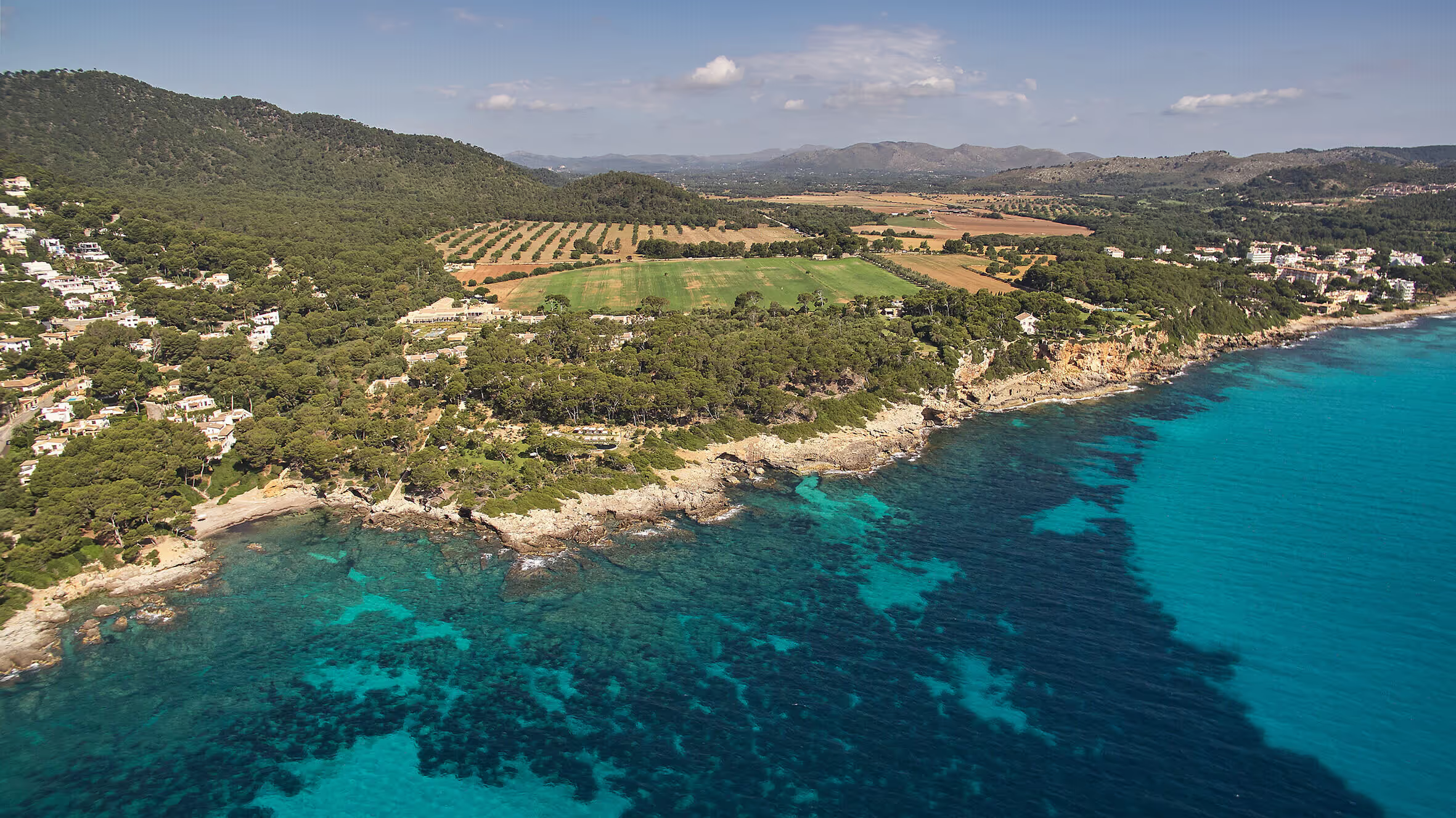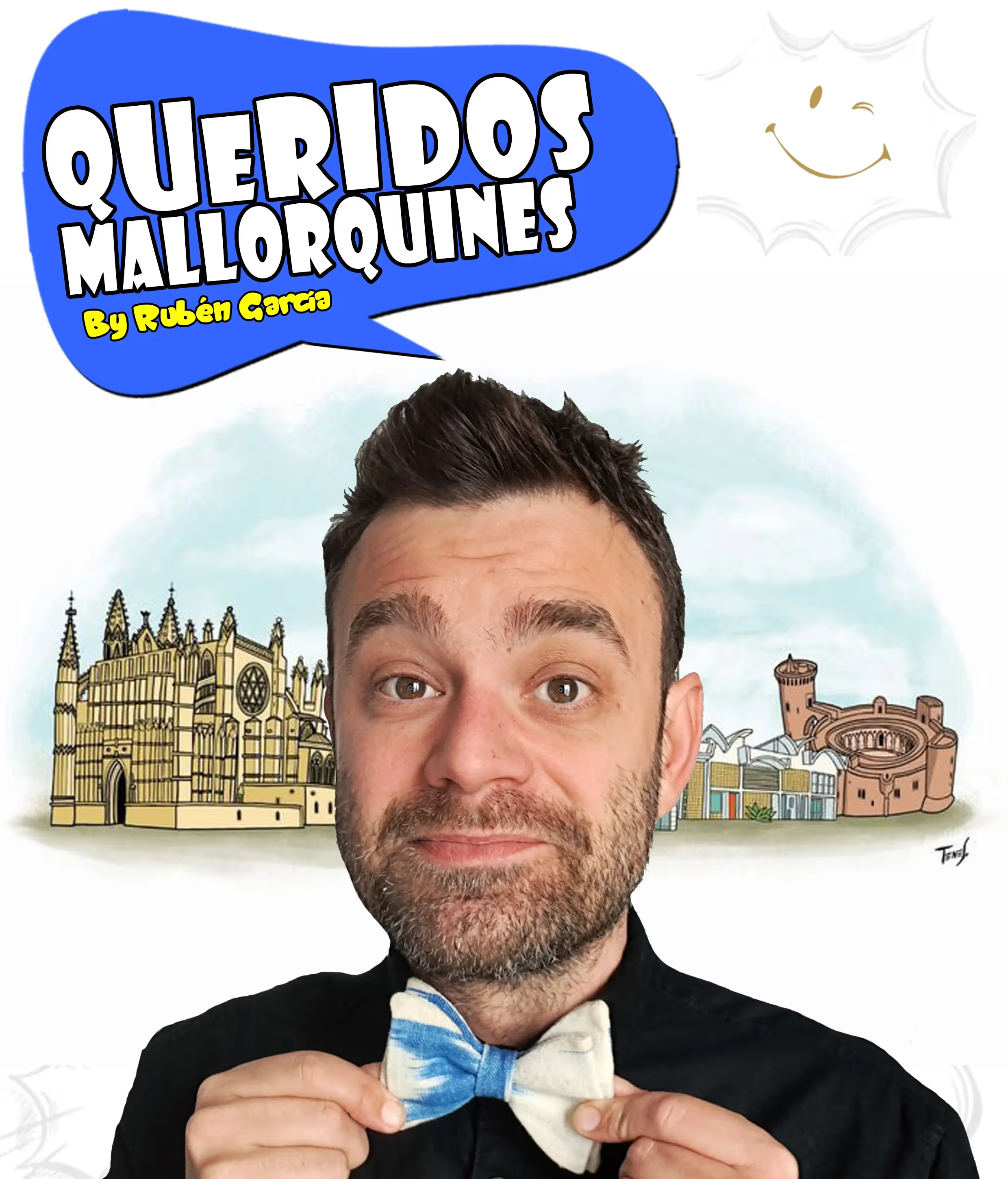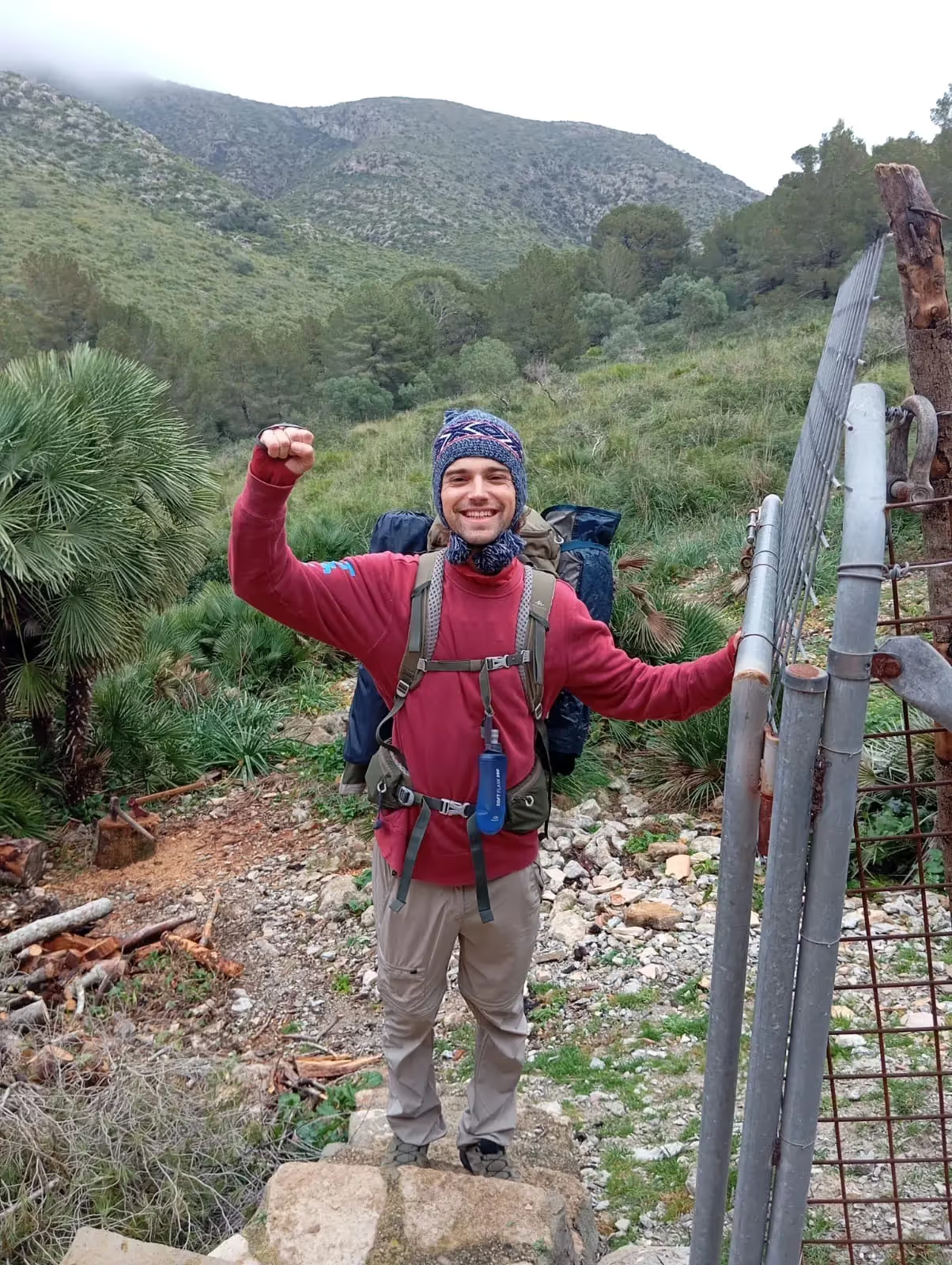
S
ome adventures begin with a flight, others begin by stepping out your own front door. When 26-year-old, Mallorcan-born Marc Guillem Llinàs Siquier set out to walk the entire circumference of his beloved island alone, it wasn’t about breaking a record or collecting likes on social media. He embarked on a deeply personal journey to connect with nature, his home and ultimately, his own sense of identity. “First and foremost, it was a deep longing to know my island more intimately. Its corners, its landscapes, its people, even how it’s developed, the contrasts,” Marc says when asked about his decision to hike around the island. Born and raised in Mallorca, he had a growing awareness that despite being Mallorcan, there were still many places he hadn’t seen. “It’s a small island, but it holds so many hidden spots. I still have so much left to explore.”
After months of travelling in Peru and Brazil, Marc longed to return to Mallorca, not just to his home, but to his roots and himself. Despite enjoying the beauty of South America, he felt like he “carried this constant sense of responsibility, especially travelling with my partner,” as he reflects on his travels. Back on his island, he felt a deeper courage and calm to explore. What he truly craved was “solitude, connecting with my inner voice, moments free from external demands, where I could simply listen to my body and its needs.”
In March 2024, Siquier set off from his home in Alcúdia, carrying only basic gear, including a tent, sleeping bag and headlamp. However, the most important piece of equipment was, in Marc’s opinion, his waterproof hat that kept him dry and protected him from the sun. “It was a good friend along the way,” he says with a warm smile. Despite the physical demands of his trek, Marc kept his food and water supplies minimal. He carried just 0.75 litres of water at a time, trusting he would find places to refill, a strategy he later admitted was risky: “It’s a kind of trust that’s not okay, because it’s water. It’s fuel.” In mountainous or protected areas, he occasionally ran dry and had to ask strangers for help or walk several kilometres off-route to find a store. For food, he kept things light and simple, packing energy bars, cookies and cured meats, and occasionally stopping at local cafés for a more substantial bite.
Marc’s journey around Mallorca was never about performance, it was about presence. What he didn’t want was to feel like he was on a hike with checkpoints. Instead, he let intuition and landscape guide him. “Honestly, I should have prepared more. I tend to have these ideas and just run with them,” he admits with a laugh. With past experience walking the Camino de Santiago, he had a basic idea of what to pack but didn’t rigorously train or make detailed plans. Marc set out to tune into his body’s natural rhythm, letting it guide when to rest, eat or walk. Without the conveniences of modern life and structure of daily routines, he discovered both freedom and difficulty in surrendering to a more natural rhythm. “Your mind still wants what it’s used to at certain hours,” he says, but through his journey, he learned to listen inward.


